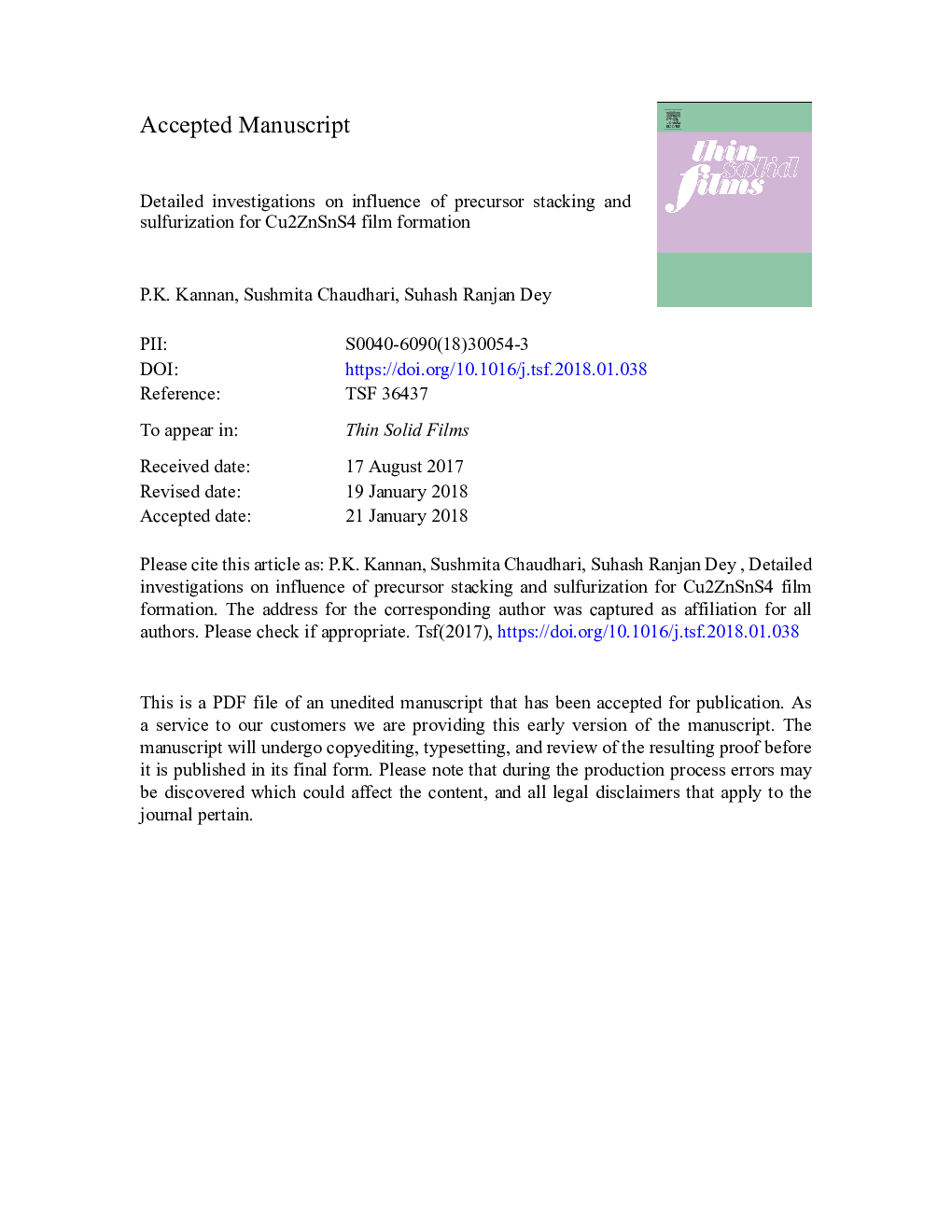| Article ID | Journal | Published Year | Pages | File Type |
|---|---|---|---|---|
| 8032885 | Thin Solid Films | 2018 | 38 Pages |
Abstract
Cu2ZnSnS4 (CZTS) is a suitable absorber material in thin film hetero-junction solar cell. In the present study, CZTS has been successfully fabricated by electron beam evaporation and the influence of precursor stacking sequences and sulfurization conditions on the formation of secondary phases have been investigated in detail. CZTS thin films are prepared by two stage process: first stage, precursor layers with two different sequences glass/Zn/Sn/Cu and glass/Sn/Zn/Cu are deposited on glass substrates at room temperature using electron beam evaporation of elemental metallic precursors; followed by the second stage, the precursor films are sulfurized in two different conditions, in presence of elemental sulfur powder and in 5% H2Sâ¯+â¯N2 environment, at 500â¯Â°C for 1â¯h of annealing time for the formation of CZTS films. Effects of sulfurization environment (sulfur powder and H2S) and ramping rate (1â¯K/min, 5â¯K/min and 10â¯K/min) on the formation of CZTS and other probable secondary phases for different stacking sequences are investigated using X-ray diffraction, Raman spectroscopy, Field emission gun scanning electron microscopy, energy dispersive X-ray spectroscopy and UV-vis spectroscopy. Deconvoluted Raman spectra revealed high crystallinity in films sulfurized at low ramping rate (1â¯K/min). CZTS formation is noticed to be enhanced by sulfurizing the films in the presence of sulfur powder when compared with H2S gas. Phase pure CZTS film with a bandgap of 1.53â¯eV is prepared using sulfurization of glass/Sn/Zn/Cu stacked film in elemental sulfur powder.
Related Topics
Physical Sciences and Engineering
Materials Science
Nanotechnology
Authors
Kannan P.K., Sushmita Chaudhari, Suhash Ranjan Dey,
